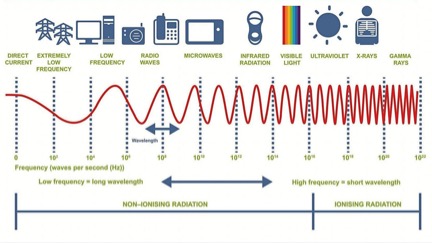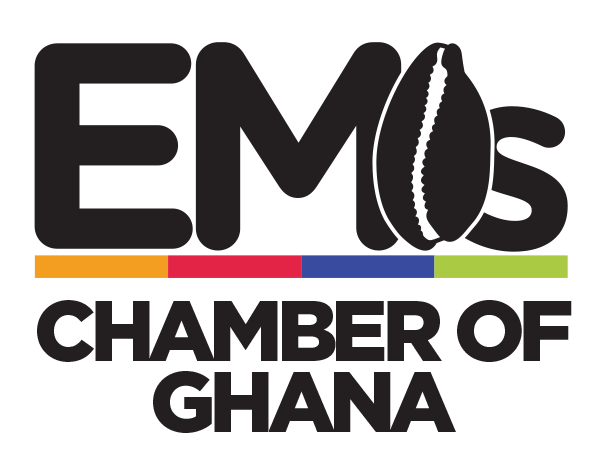I recall 16years ago in High School when our communication messages took a minimum of 21 days to a month in the post or hours of travelling to deliver. Interestingly now that is a thing of the past as a phone call, text (Whatsapp) or email cures that in seconds.
Telecommunication companies are largely credited for making these strides possible through investments in infrastructure, such as towers or masts. With the growing demand for mobile phone services coupled with the growth of new technologies like 5G, it is necessary to further increase the infrastructure available to ensure an acceptable level of network coverage and Quality of Service (QoS) and Quality of Experience (QoE).
On the back of these developments fueling the efficiency and productivity amongst citizens is a growing myth and concern that telecom towers and masts constitute a danger to their health and safety. Although it is right for people to ask, these fears are borne largely out of lack of information and unfamiliarity with the facts surrounding the issue of radio frequencies within the electromagnetic spectrum.
This feature seeks to raise awareness of what constitutes harmful or non-harmful exposure. It further highlights how mobile operators, telecom regulators, and agencies within Ghana, work to ensure global best practices are adhered to guarantee that safety of the workers and service users is not compromised which culminates into the sustainability of this dynamic industry.
Mobile network antennas installed on telecom masts and mobile devices such as smartphones exchange digital information (e.g., voice or data) using radio waves – a form of electromagnetic energy.
Insert A

A cursory look at Insert A, details what constitutes non-ionising and ionizing radiation. Scientists remain uncertain as to possible health effects from non-ionising radiation but Scientific evidence is clear that exposure to ionizing radiation can cause cancer, with risk to health depending on the dose of ionizing radiation received.
“The radio waveband – used for mobile phone networks – is non-ionising, which means it lacks sufficient energy to break apart DNA and cause cellular damage,” says Dr. David Robert Grimes, Oxford-trained physicist, and cancer researcher.
“People are understandably concerned over whether they might elevate their risk of cancer, but it’s crucial to note that radio waves are far less energetic than even the visible light we experience every day,” says Dr. Grimes.
This evidence was corroborated by Dr. Joseph Amoako; a senior scientist at the Radiation Protection Institute under the Ghana Atomic Energy Commission about a month ago when he appeared on the Chamber Dialogue (a social media live engagement). He said; “Radiation from mobile phones and telecom masts are non-ionizing and do not have the energy to remove an electron from an atom.”
Telecom Masts (through the antennae installed on them) transmit and receive radio signals from mobile phones and other wireless devices, which are invisible to the eye. Without telecom masts or towers in our communities, it would be impossible to operate our mobile phones whilst moving from place to place. If telecom masts are not situated within specific ranges of one another, uninterrupted phone services will be almost impossible to deliver.
The figure below highlights how electromagnetic fields span a range of frequencies and wavelengths forming an electromagnetic spectrum. It is important to state that, we are surrounded by electromagnetic radiation all the time, from television, light bulbs, radio signals, mobile phones and natural sources such as sunlight.
Standards
Globally, the international commission on Non-Ionizing Radiation Protection (ICNIRP) sets standards and makes safety recommendations to guide the industry worldwide. The European Union (EU), World Health Organization (WHO) and the International Telecommunications Union (ITU) which is an inter-governmental body and an agency of the UN of which Ghana is a member, have also repeatedly endorsed the guidelines set by ICNIRP on the permitted exposure limits for electromagnetic fields (EMFs) such as mobile phones. Mobile operators, Tower Companies and Regulatory agencies in Ghana, such as the EPA, NCA, and RPI work within these guidelines.
Mobile Operators and licensed Tower Operators who build towers on their behalf require permits and certifications from the Regulatory Agencies under the supervision of the Industry Technical Committee (ITA). The ITA process includes certification of compliance with ICNIRP Guidelines.
Besides, the National Communications Authority in July 2018, commissioned a state of the art Type Approval Laboratory that tests electronic communications equipment such as mobile phones, tablets imported into the country and ensures it conforms to international standards. The laboratory will address public health concerns regarding emissions from masts and strengthen market surveillance.
Evidence and sample tests from the Radiation Protection Institute and the National Communications Authority have consistently indicated that, says emission levels from mobile devices and telecom masts remain way below the global set limits for Radio Frequency signals.
Global Studies on EMFs Impact
Many studies have been carried out in Europe and elsewhere to investigate the possibility of links between mobile phones and various health problems. Notable among such researches include the COSMOS, ICNIRP, SCHENIHR, and IET.
COSMOS (“Cohort Study of Mobile Phone Use and Health”) is an international cohort study investigating the possible health effects of long-term use of mobile phones and other wireless technologies. In the COSMOS study, scientists from the UK, Denmark, Sweden, Finland and the Netherlands monitored nearly 300,000 mobile phone users in Europe between 2012 to 2016 to identify possible health problems to ascertain changes in the frequency of specific symptoms over time, such as headaches and sleep disorders, as well as the risks of cancers, benign tumors, and neurological and cerebrovascular disease linked to the use of mobile phones over a long period of time. The studies have concluded that there is no convincing evidence to date that mobile phones are harmful to health. However, the widespread use of mobile phones is a relatively recent phenomenon and it is possible that adverse health effects could emerge after years of prolonged use. (http://www.thecosmosproject.org/mobile-phones-health/)
ICNIRP, after analyzing base stations’ High-Frequency Fields (HF) effects on the body and health implications concluded that “a large number of studies have been undertaken on both acute and long-term effects from HF exposure typical of base stations. Research at these levels of exposure has provided no conclusive evidence of any related adverse health effects.”
ICNIRP’s statement on health Issues related to the use of hand-held radiotelephones and base transmitters among other things note that there is no substantive evidence that adverse health effects including cancer can occur in people exposed.
The Scientific Committee on Emerging and Newly Identified Health Risks (SCENIHR) also concludes that the results of current scientific research show that there are no evident adverse health effects if EMF exposure remains below the levels set by current standards.
The Institute of Engineering and Technology (IET) also notes that the balance of scientific evidence to date still does not indicate that harmful effects occur in humans due to low-level exposure to EMFs.
Conclusion
With over 40,000 expert articles on the WHO website alone related to radiofrequency radiation and human health, significantly none of them supports the notion about radiofrequency radiations from telecom base stations causing cancer.
Even though there are equally other sources of research that although classify all radiofrequency radiation (of which mobile signals are a part) as “possibly carcinogenic” such research consistently includes a statement to the effect that “there is evidence that falls short of being conclusive that exposure may cause cancer in humans”
What is instructive for consumers to note is that these types of radiofrequency exposures are non-ionizing and safer than even the sun’s ultra-violet rays which fall within the harmful ionizing category and can cause skin cancers.
Beyond the global studies, we see Ghana itself is going a step further to test these communications equipment to ensure that they meet the set global standards and are safe for usage by citizens.
Perhaps beyond mobile phones, telecom masts, and other technological devices, we do not understand, common commodities like talcum powder, pickled (preserved) vegetables, processed meat, and alcoholic drinks are classified as high-risk carcinogenic substances, which we readily consume.
In conclusion, I will quote Prof. Emmanuel Amamoo-Otchere, a renowned and outspoken Ghanaian Scientist who said; “a good telecommunications service and experience requires a high density of handing over network of base stations.” Quality service is therefore not possible unless the public are comfortable coexisting with telecom masts.”
References
http://www.icnrip.org/en/applications/base-stations/index.html
http://ec.europa.eu/health/scientific_committees/emerging/docs/scenihr_o_041.pdf
http://www.theiet.org/impact…/mobiles-pylons-health-factfiles
http://www.who.int/peh-emf/research/database/en/
https://www.iarc.fr/wp-content/uploads/2018/07/Monographs-QA.pdf
Author: Derek Laryea
Head of Research and Communications
Ghana Chamber of Telecommunications
derek@telecomschamber.org





